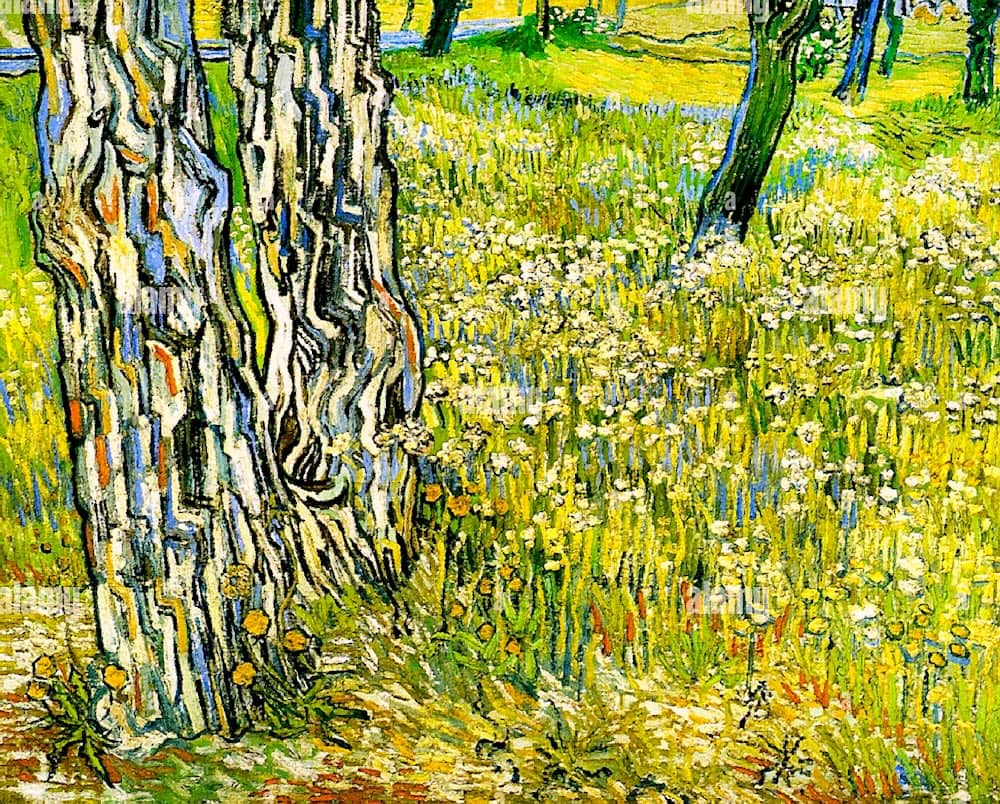Tree Trunks in the Grass, 1890 by Vincent Van Gogh

The canvas shown here dates from the brief but highly productive period at the end of Van Gogh's stay in Saint-Remy. He wrote to Theo:
work is progressing well, I have done 2 canvases of the fresh grass in the park, one of extreme simplicity. I enclose a quick scribble of it'.
In his letter, Van Gogh cites the painting as evidence of his ambition and the strength he still possessed despite his illness and his incarceration in the dreary asylum, where boredom was his worst enemy. By his own account, Vincent had no time to lose - 'work beckons' - and he was convinced that his appetite for work distinguished him from the other inmates, made him impervious to all other cares and kept him in good spirits. 'They say that in painting one should never expect or seek more than a good picture, good conversation and a good meal as the height of well-being, and not count the less brilliant moments in between', he added.
This fresh sous-bois, or undergrowth, is one such 'good picture'. It owes its air of extreme simplicity to its composition, which - compared with versions of similar motifs painted a year earlier - is well-organised and effective. The trunks of the pine trees in the foreground, with their striking structure and colouring, dominate the scene, and the painting as a whole has a highly decorative effect, achieved partly by the lack of strident tonal and colour contrasts.




















